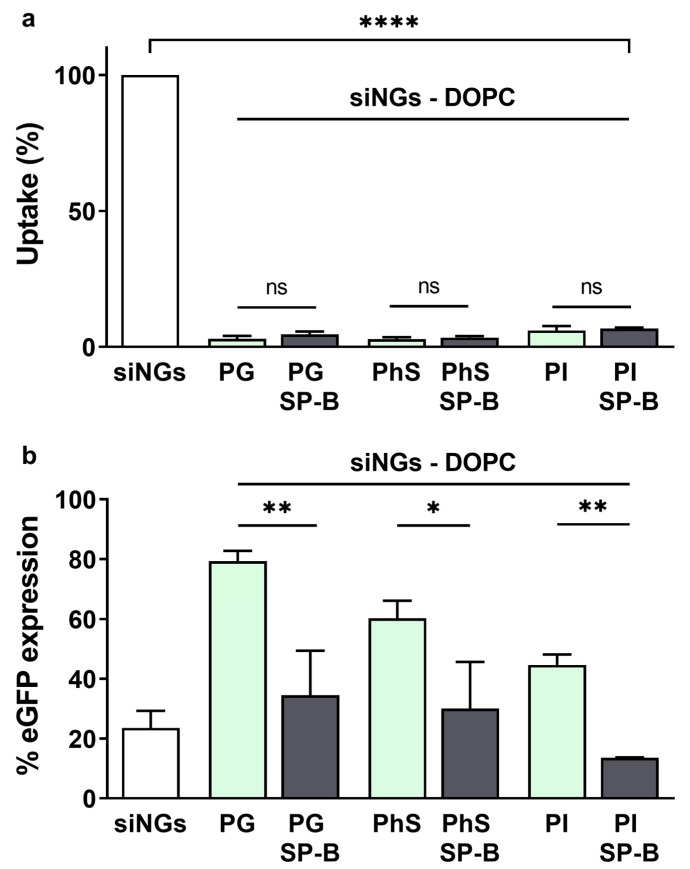Figure 5.
Role of the anionic lipid in biological efficacy of proteolipid-coated nanogels. (a) Cellular uptake and (b) gene silencing evaluated on H1299_eGFP cells via flow cytometry. SiRNA-loaded nanogels (siNGs) were coated with a mixture of DOPC:PG, DOPC:PhS or DOPC:PI (weight ratio 85:15). The presence of negatively charged lipids is required to allow the formation of the core-shell structure via electrostatic interactions. The replacement of the anionic phosphatidylglycerol (PG) with phosphatidylserine (PhS) or phosphatidylinositol (PI) does not abrogate SP-B’s beneficial effect on siRNA delivery. All experiments were performed with a fixed NG concentration (30 µg/mL) and siRNA concentration (50 nM). Statistical analysis was performed via an unpaired t-test. Data are represented as the mean ± SD (n = 3) and statistical significance is indicated (* p < 0.05, ** p < 0.01, **** p < 0.0001, ns = not significant).

